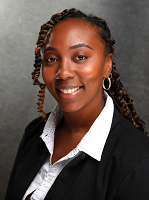School comes first. It is a phrase we often hear from our parents and teachers from a young age, emphasizing the importance of prioritizing your focus on schoolwork. Even in graduate school, while pursuing my Ph.D., my advisor alludes to this concept in our sometimes-heated one-on-one meetings discussing my performance as a doctoral student. These conversations usually approached the topic of my advisor’s concern that I was working too many hours at my second job and should be dedicating more time to research.
My retort would always be that higher education is not designed for students like me, who must work full-time while attending school full-time to afford a place to live, food to eat, or a family to support. The expectation that “school comes first” indicates a higher education experience created by and for the most privileged in our society.
Non-traditional students must balance many obligations and priorities, and post-secondary institutions must find ways to help them maintain this balance to improve student success outcomes.
When I decided to move from Virginia to Austin to pursue my Ph.D., I had less than $1,000 to my name. However, I fit as much of my belongings in my tiny Nissan Versa and began this educational journey. I found a roommate to share relatively cheap student housing near campus and a fellowship through my first year of graduate school. The fellowship stipend was enough to cover the rent and a few necessities, but it would not cover my car payment or any emergency that might come up. Putting in as many applications as possible within a week of arriving in Texas, I quickly accepted an offer to work as a personal shopper at HEB. This second job has been my primary source of income for the past five years.
Working two jobs inevitably limits the time I can commit to my Ph.D. work. One of the events my department always hosts is called the “Hidden Curriculum,” where students who are further along in their degree program speak to the incoming students about the unofficial requirements for unspoken expectations for the successful completion of their degree. The hidden curriculum includes publishing and producing as much research as possible, making professional connections with professors and colleagues, and attending and presenting at several research conferences. Completing these parts of the hidden curriculum often determines who gets the internship, fellowship, or job.
The hidden curriculum is just as important as the official one, and it is often the part that non-traditional students are forced to sacrifice to make ends meet, care for their families, and keep all those spinning plates in the air. “I’ve heard my colleagues talk about students publishing their second and third manuscripts,” my advisor told me in our last meeting, lamenting my lack of time for additional research.
Luckily, my advisor and I have significantly grown in our relationship over the past five years. She followed her statement by expressing her understanding that my situation differs from students who already have several publications. I’ve had to be extremely honest and transparent with my advisor about my family and financial situation and the need to work a full-time job in addition to my Graduate Research Assistantship, which is how students without guaranteed funding for tuition and costs of living pay for school and have a basic wage. The assistantship is essential for research experience, but the pay tends to be low in fields like education. We have reached an understanding through transparency and communication, but I am still missing out on parts of this hidden curriculum because I am a non-traditional student. This is frustrating on a personal level, but it’s also a loss for all of us when talented individuals can’t access the same opportunities as their peers from more affluent backgrounds.
My advisor and I both hope that someday, there will be better support in higher education for students like me. The University of Texas at Austin has taken steps toward supporting non-traditional students directly and indirectly. My department, Educational Psychology, has structural supports that help students continuously build upon their research interests, resulting in two publishable papers by the end of the program. If utilized properly, all students should be able to conquer one of the major aspects of the hidden curriculum. Furthermore, after voicing my opinion to my advisor and a few other faculty, my department has worked to secure money for student grants to conduct their research or to travel to research conferences.
Despite the progress, there is a long way to go. How can we build support for non-traditional students and level the playing field? I look forward to exploring this question further with my Foundation colleagues.
What is a non-traditional student?
The National Center for Education Statistics uses three sets of criteria to identify nontraditional students: enrollment patterns, financial and family status, and high school graduation status.
- Traditional students tend to enroll in post-secondary education full-time immediately after high school. Students outside of this enrollment pattern would be considered non-traditional.
- Non-traditional students may also have family and financial responsibilities that traditional students do not have. For example, these students may have children or other family members to care for or may work a full-time job.
- Non-traditional students may not have received a standard high school diploma. These students may have received a GED or other certificate of completion.
In Fall 2019, non-traditional students made up 33% of all postsecondary enrollment. (Post-Secondary National Policy Institute, 2023)
About the Author
 Shamecca is a fifth-year doctoral student in Educational Psychology at The University of Texas at Austin and is the newest Graduate Fellow at the Trellis Foundation. She is also a Graduate Research Assistant at the Meadows Center for Preventing Educational Risk, where she manages follow-up testing for a word-problem math intervention in the Austin Independent School District.
Shamecca is a fifth-year doctoral student in Educational Psychology at The University of Texas at Austin and is the newest Graduate Fellow at the Trellis Foundation. She is also a Graduate Research Assistant at the Meadows Center for Preventing Educational Risk, where she manages follow-up testing for a word-problem math intervention in the Austin Independent School District.
As a first-generation college graduate, Shamecca is passionate about education accessibility and equity for low-income and BIPOC students. Before moving to Austin, TX, to pursue her Ph.D., she served as a college adviser in rural Virginia with the Virginia College Advising Corps. As an adviser, she assisted students through the journey to higher education.
Shamecca graduated from the University of Virginia with a B.A. in Psychology and Spanish. She also has an M.Ed. in Quantitative Methods from the University of Texas at Austin and is anticipating completing her dissertation and doctoral degree in May 2025.

